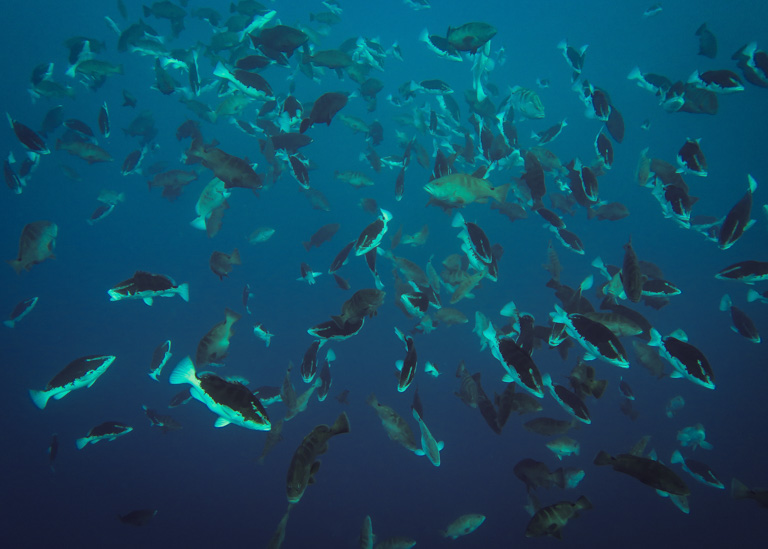- A study, published Jan. 6, has found that the population of Nassau grouper (Epinephelus striatus) around Little Cayman Island more than tripled between 2003 and 2015.
- The researchers attribute the rebound to a scientific monitoring effort by NGOs and universities as well as the Cayman Islands government response to the data.
- The government has closed the fishery and instituted size and catch limits to protect the critically endangered species.
Scientific monitoring and protection measures aimed at helping a critically endangered species of fish in the Caribbean appear to be working, according to a recent study.
The research, published Jan. 6 in the journal Proceedings of the National Academy of Sciences, found that the population of Nassau grouper (Epinephelus striatus) around Little Cayman Island more than tripled between 2003 and 2015.

Brice Semmens, the paper’s senior author and an ecologist at the Scripps Institution of Oceanography at the University of California, San Diego, said the team tracked groupers using both video transects and diver-recorded observations of tagged fish throughout the study period.
“We developed a unique approach for monitoring these populations over the course of nearly two decades,” Semmens said in a statement.
Nassau grouper once swarmed reefs across the Caribbean by the thousands during their winter breeding periods. That behavior made them “very easy for fishermen to catch,” Lynn Waterhouse, the study’s lead author and a research biologist at Chicago’s John G. Shedd Aquarium, said in the statement. Waterhouse was formerly a doctoral student at Scripps Oceanography.
In 2018, these threats led the IUCN to change the Nassau grouper’s designation from “endangered” to “critically endangered.”

In 2001, two fishers came upon a group of around 7,000 spawning Nassau groupers west of Little Cayman. Over the next two years, the Cayman Islands Department of Environment figured that fishers hauled in 4,000 groupers.
The discovery and the subsequent exploitation also touched off the formation of the Grouper Moon Project, bringing together the environment department, Scripps Oceanography, Oregon State University and a citizen conservation group, Reef Environmental Education Foundation, or REEF, in 2002.
In 2003, the country’s conservation board closed off certain areas to fishing during the grouper’s winter spawning. This move, combined with the Cayman Islands’ marine protected areas, helped the Little Cayman Nassau grouper population recover, the study found.
The government later bolstered these measures in 2016 with size and catch limits and an all-out fishing ban from December to April.

“This really demonstrates the power of this collaborative approach to conservation,” Christy Pattengill-Semmens, a co-author and the director of science for REEF, said in the statement. “We were able to monitor the population and provide information to support management as the data came in, allowing the Cayman government to respond rapidly with policy changes.”
Scripps Oceanography’s Brice Semmens called the project “an ideal approach for conservation.”
“Just doing the science isn’t enough,” he said. “You need to partner with groups and governments capable of turning science into conservation decisions that support the local community.”
Banner image of a researcher in an aggregation of Nassau grouper by Paul Humann, © Grouper Moon Project.
Citations:
Sadovy, Y., Aguilar-Perera, A. & Sosa-Cordero, E. (2018). Epinephelus striatus. The IUCN Red List of Threatened Species 2018: e.T7862A46909843. doi:10.2305/IUCN.UK.2018-2.RLTS.T7862A46909843.en. Downloaded on 06 January 2020.
Waterhouse, L., Heppell, S. A., Pattengill-semmens, C. V, Mccoy, C., & Bush, P. (2019). Recovery of critically endangered Nassau grouper (Epinephelus striatus) in the Cayman Islands following targeted conservation actions. Proceedings of the National Academy of Sciences, 1-9. doi:10.1073/pnas.1917132117
FEEDBACK: Use this form to send a message to the author of this post. If you want to post a public comment, you can do that at the bottom of the page.














